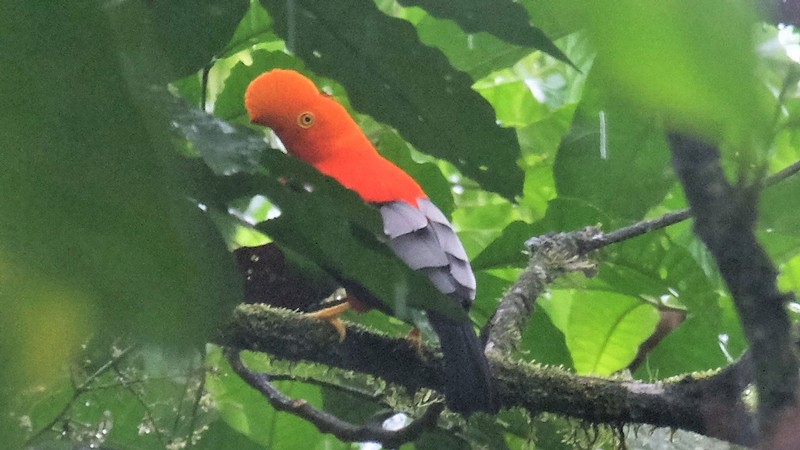Large birds of South America, including toucans, pigeons and turkey-like guans, as well as Andean cocks-of-the-rocks — brightly colored flyers with distinctive crests — face serious survival challenges. The animals’ habitat is shrinking due to deforestation resulting from expanding farms, ranches and mineral extraction activities. Hunting as well as collisions with human-built structures, including power lines, buildings and wind turbines, are also affecting bird populations. Encompassing all of these pressures is further habitat loss due to climate change.
Living species don’t exist in a vacuum, so what happens if large birds go extinct? Among other effects, these fruit-eating birds enable long-distance dispersal of seeds, ensuring their plant neighbors’ survival. Using simulated extinction of large birds and analyzing interaction data from eight Andean bird-plant seed dispersal networks, Utah State University scientists Binod Borah and Noelle Beckman explored whether or not interaction rewiring — that is, changes in interactions with new or different existing species — could mitigate negative effects from loss of the big birds.
The USU scientists reported their findings in a recent issue of the journal Oikos. Their research was funded by a Utah State University seed grant.
“Interaction rewiring is a remarkable feature of ecological networks that can buffer the effects of species loss,” says Borah, a postdoctoral researcher. “In this case, large birds are critical for long-distance seed dispersal, which is crucial for healthy plant populations.”
Birds carry fruit seeds in their beaks and in their guts over sufficient distances to reduce competition with parent plants and foster colonization of new plant habitats — both of which promote genetic diversity.
“Birds are able to do this because of their size and because of the size of their beaks,” Borah says. “The bird’s size determines gut retention time and flight speed. A bird’s beak size determines the size of fruit it’s able to consume.”
These components, he says, are important biological parameters in estimating whether a replacement species is capable of stepping in to make up for the services lost from their predecessors’ extinction.
“Therefore, estimating the effects of interaction rewiring must involve trait-matching and trait resemblance,” Borah says. “That is, where interactions are able to continue between partners because of matching or similar traits.”
Beckman, associate professor in USU’s Department of Biology and the USU Ecology Center, says the study helps to fill a knowledge gap in previous research because it focuses on the consequences of interaction wiring on ecological functions — in this case, long-distance seed dispersal — rather than just ecological structure.
“For each plant species in each of the networks we studied, we identified the bird species with which it interacts, along with the estimated seed dispersal distances generated by the interaction avian seed dispersers,” she says. “We calculated long-distance dispersal from dispersal distances pooled across these interacting bird species.”
Using a suite of simulations and a trait-based framework, the scientists discovered interaction rewiring can counter, but can’t fully mitigate, the effects of large bird loss. Further, interaction rewiring can’t stem the affects of human-caused habitat loss.
“What our study underscores is the importance of protecting large birds to preserve ecological functions,” Beckman says. “They’re irreplaceable.”
